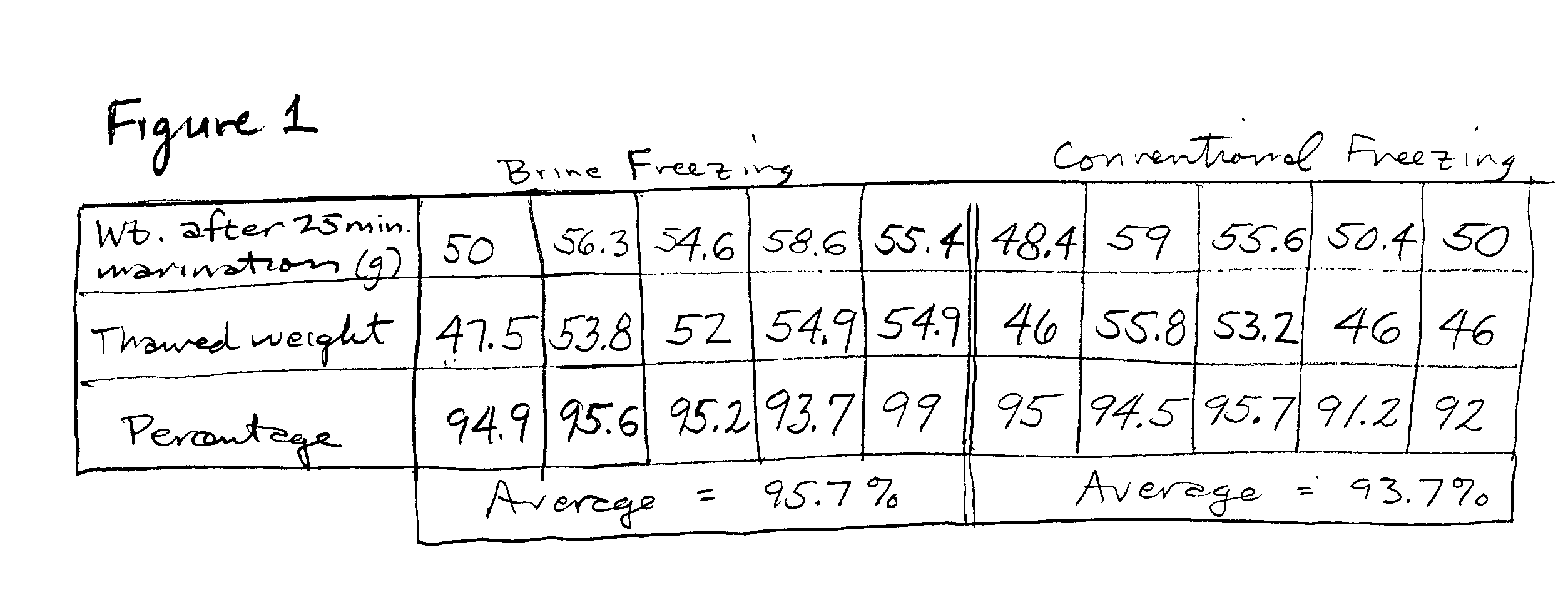Method of freezing meat in a marinade
a technology of marinade and meat, applied in the field of freezing meat, can solve the problems of deterioration in taste and texture, unsatisfactory, and difficult marination, and achieve the effects of reducing the temperature of meat, and improving the quality of mea
- Summary
- Abstract
- Description
- Claims
- Application Information
AI Technical Summary
Benefits of technology
Problems solved by technology
Method used
Image
Examples
Embodiment Construction
[0019] According to the present invention, the brine solution used for freezing the meat includes a cruciferous oil. In a preferred embodiment, oil from a plant of the genus Brassica is used. These oils include, but are not limited to, oil of Brassica campestris, otherwise known as rapeseed oil, and oil of Brassica hirta, also known as mustard oil.
[0020] Rapeseed oil has a solidification point of 14.degree. F. (-10.degree. C.), a specific gravity at 59.degree. F. (15.degree. C.) of 0.915, a refractive index at 122.degree. F. (50.degree. C.) of 1.4706, an iodine value of 98.6 and a saponification value of 174.7. The oil includes about 1% palmitic acid, the only saturated component of the oil, about 32% oleic acid, about 15% linoleic acid, about 1% linolenic acid and about 50% erucic acid. Palmitic acid, otherwise known as hexadecanoic acid is a saturated fatty acid having 16 carbon atoms and a molecular weight of 256.4.
[0021] Oleic acid, also known as (Z)-9-octadecenoic acid, has 18 ...
PUM
 Login to View More
Login to View More Abstract
Description
Claims
Application Information
 Login to View More
Login to View More - R&D
- Intellectual Property
- Life Sciences
- Materials
- Tech Scout
- Unparalleled Data Quality
- Higher Quality Content
- 60% Fewer Hallucinations
Browse by: Latest US Patents, China's latest patents, Technical Efficacy Thesaurus, Application Domain, Technology Topic, Popular Technical Reports.
© 2025 PatSnap. All rights reserved.Legal|Privacy policy|Modern Slavery Act Transparency Statement|Sitemap|About US| Contact US: help@patsnap.com


